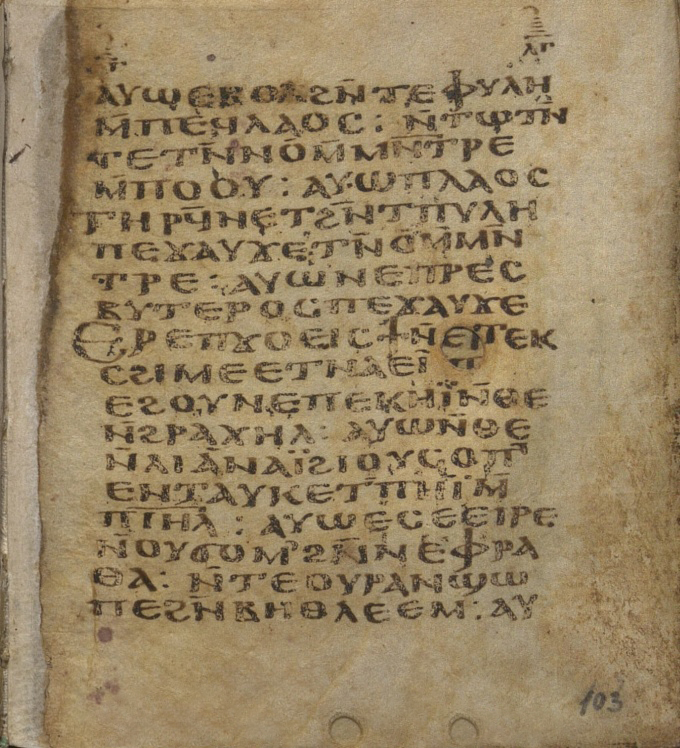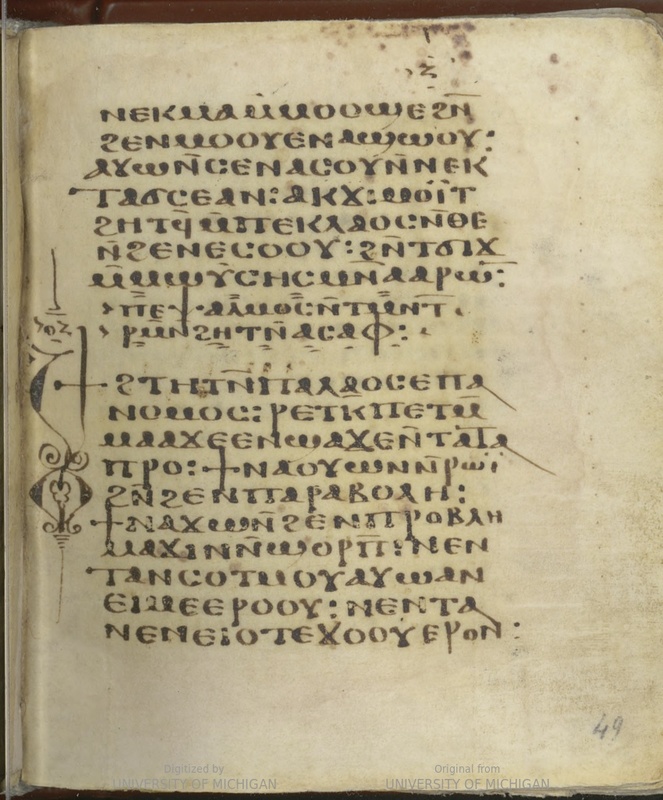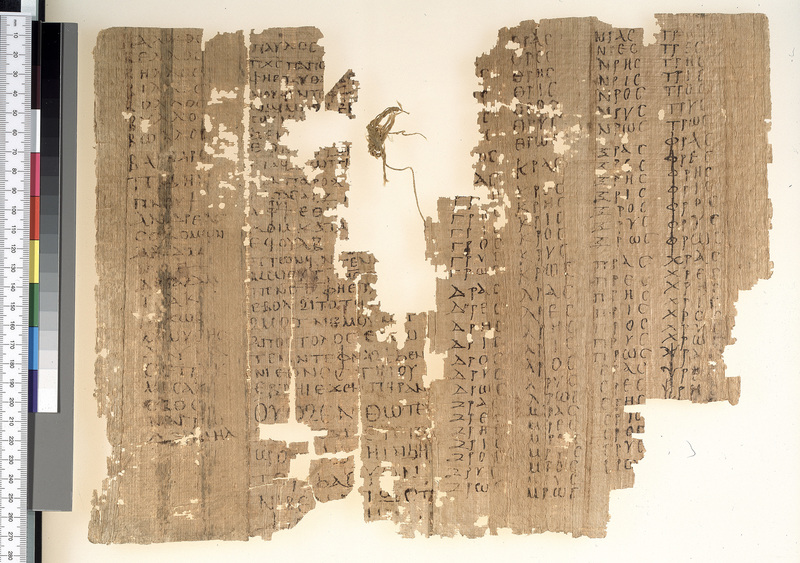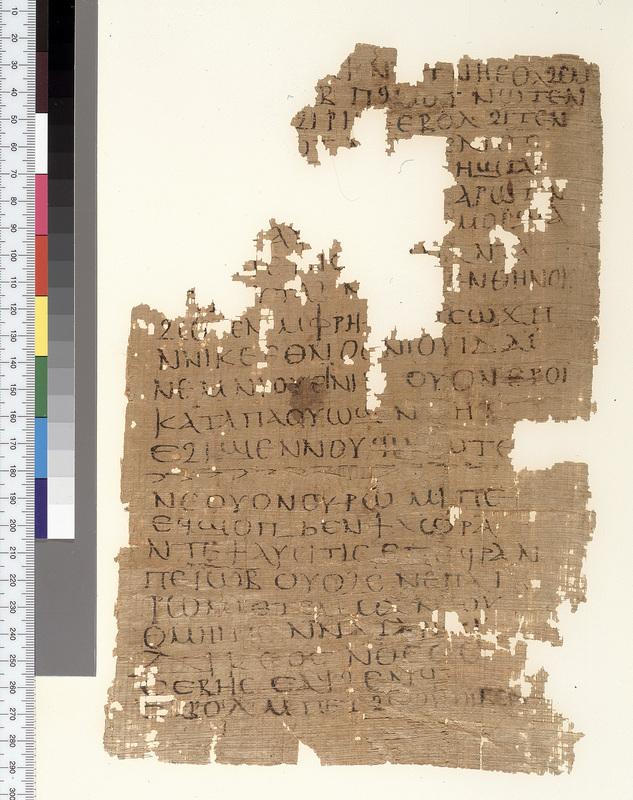The Bible in Coptic
Christianity reached Egypt in the times of the Apostles and, according to tradition, St. Mark himself brought Christianity to the Egyptians about the middle of the first century. The Coptic language, which is the last stage of the Egyptian language, and whose alphabet was mostly derived from the Greek alphabet in the second century BCE, was one of the first languages to translate the New Testament and then the entire Bible as early as the second and third centuries respectively. While the Scriptures were translated into various dialects of Coptic (Akhmimic, Lycopolitan, Mesokemic, Fayyumic, Sahidic, and Bohairic) the most lasting and widely spread Coptic versions of the Bible were written in Sahidic and Bohairic.
Sahidic was the Coptic dialect used for administration and literature in Christian Egypt, being widely used across the country from the fourth to the twelfth century CE. One of the most important centers of production of Sahidic manuscripts was the Christian scriptorium in the town of Touton (ancient Tebtunis), situated in the southern part of the Fayyum oasis. During the eighth and ninth centuries, this scriptorium produced a large number of manuscripts, many of which were donated to the nearby monastery of the Archangel Michael at Phantoou (el-Hamuli), located further north in the Fayyum. Other Touton manuscripts were found at the White Monastery near Sohag, like the illuminated parchment fragment displayed above (Mich. Ms. 158. 5), suggesting close ties between these two Egyptian monastic settlements during the Middle Ages.
The two images displayed above (Mich. Ms. 166 & 167) are from two small Sahidic codices that were found along with three other Sahidic codices of similar size in a jar unearthed near the so-called Step Pyramid at Saqqara around the year 1924. These three manuscript are held at the Chester Beatty Library, Dublin. The early dating of these manuscripts, late sixth or early seventh century, is based on the dating of some coins found with the manuscripts from the reigns of Justinian (527-565) and, perhaps, Maurice (582-602).
The Bohairic dialect was used in northern Egypt, particularly in the area of the Delta. It is the only Coptic dialect used from the Middle Ages onward, being still in used today as the liturgical language of the Coptic Church. Unfortunately, there are very few extant Bohairic manuscripts from the earliest period of the Coptic literary production, that is, from the fourth to the sixth century CE. Above are images of two pages (P. Mich. inv. 926, 5v & 4r) from a codex written in Bohairic containing school exercises in the form of a syllabary, that is, an instructional tool consisting of consonant-vowel combinations arranged in alphabetic order, and some extracts from the Scriptures: the beginning of the Paul's Epistle to the Romans and the first verse of the Book of Job. Originally, this codex consisted of four bifolia (pairs of conjugated leaves), of which two remain together, sewed on the middle line with a single loop of light-brown two-strand cord from the bottom of the page, tied at the back with an elaborate knot. The page on the left, 5v, consist of two columns: the left column contains a series of syllables, followed by a list of biblical names; the right one contains the beginning of St. Paul's Epistle to the Romans. On 4r the series of syllables with final sigma has been repeated with a rho added after the initial consonants.
On fol. 6r above (P. Mich. inv. 926, 6r), St. Paul's Epistle of Paulus to the Romans continues, with the omission of several verses. On the lower part of the page an ornamental line separates the Epistle from the first verse of the Book of Job.
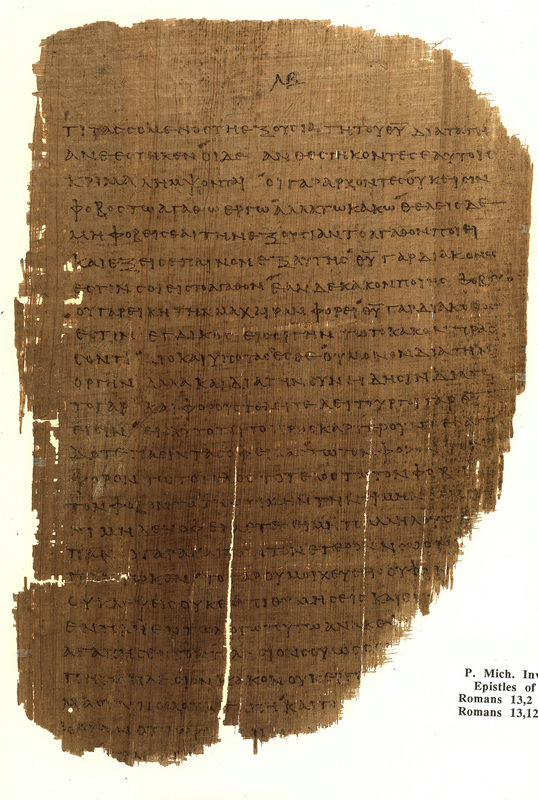
The Greek Bible

The Byzantine Bible


